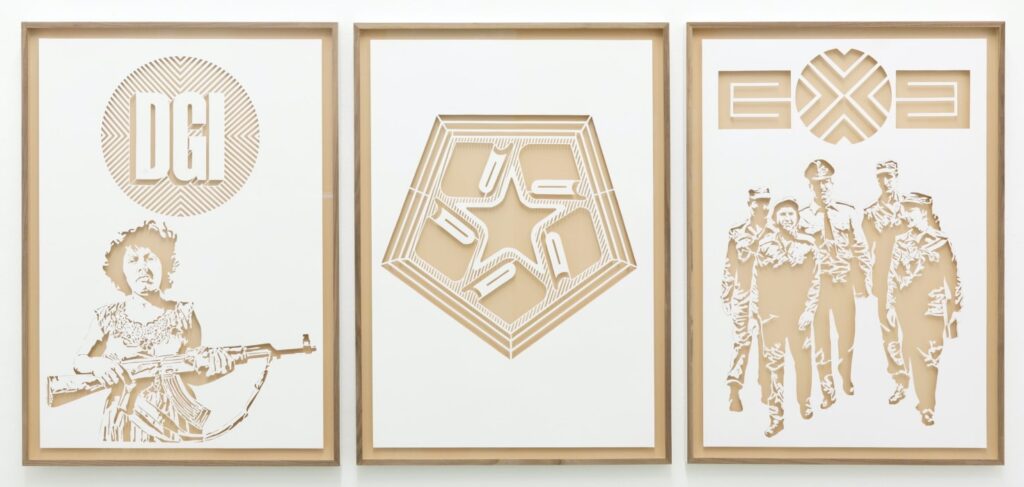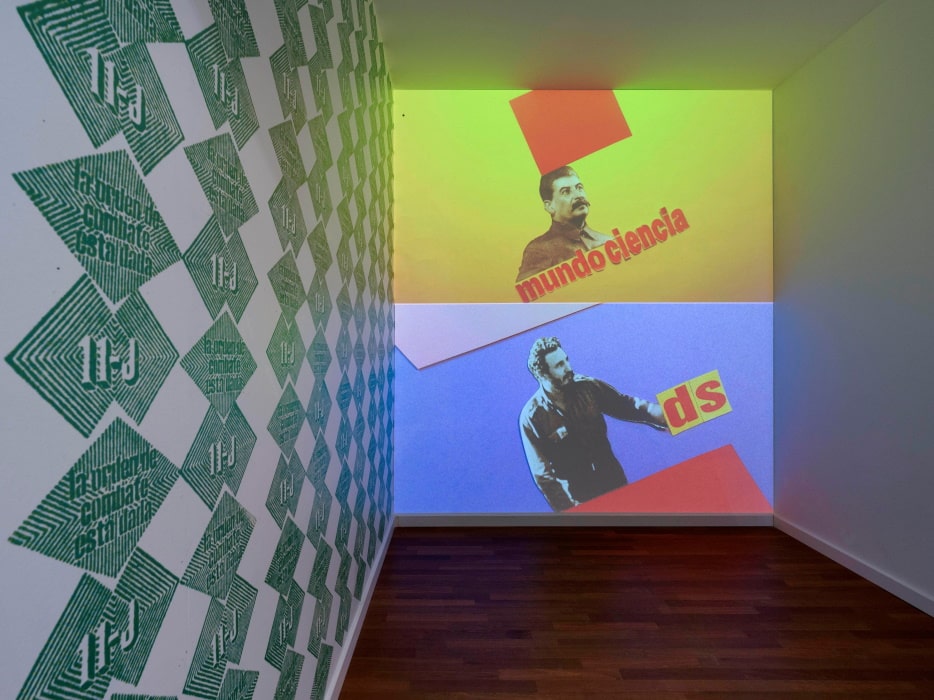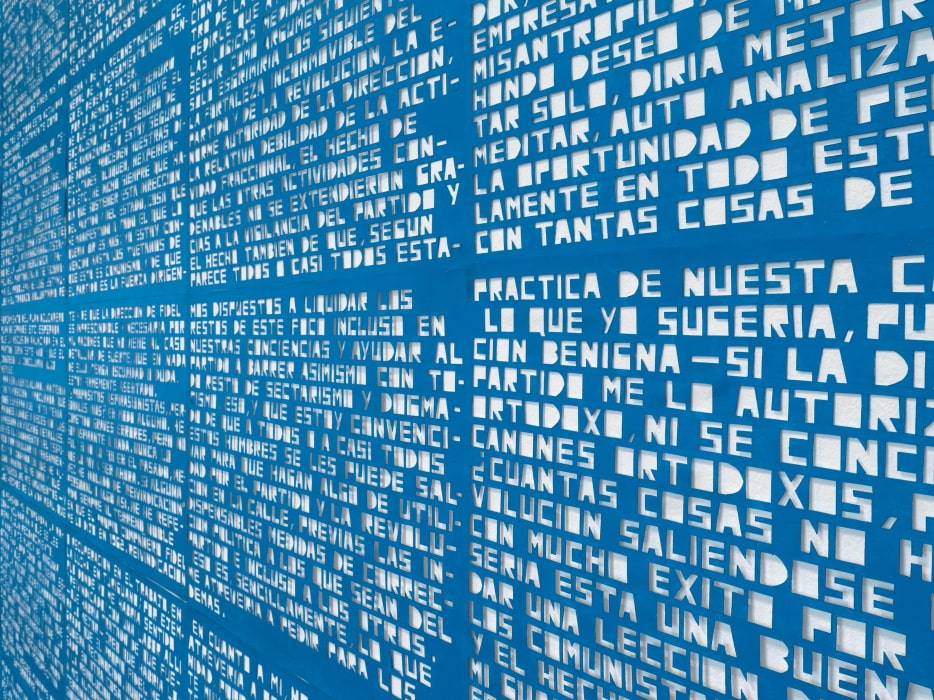PROLOG | PERSÖNLICHES
(in englischer Sprache) Hamlet, where are you from, where were you born and when? I was born in Havana, Cuba. How and where do you currently live and work? I am now working and living at the Kunstlerhaus Bethanien with an artistic grant until October. Which writers do you currently find exciting and which books are on your bookshelf? Here in my Berlin studio I have: Art and Production (Boris Arvatov), Antes que Anochezca (Reynaldo Arenas), Confluencias (José Lezama Lima), The Pale Horse (Boris Savinkov), Heart of a Dog (Mikhail Bulgakov). Which books have influenced or shaped you? Many, but I will especially keep in mind: Cuentos Fríos (Virgilio Piñera), Los Siete Locos y Los Lanzallamas (Roberto Arlt), Operación Masacre (Rodolfo Walsh), 1984 (George Orwell), In the country of last things (Paul Auster), Dead Souls (Nikolai Gogol) and a lot of police and crime fiction novels. What music do you listen to and when? Always Cuban music from all times. And polish jazz from the 60s. But also a lot of rock. I really love good and classic rock. What do you think about breakfast? Breakfast is very important to me. I prefer to drink tea and eat bread with something on it. Honestly: Breakfast is a vital ritual in the morning for me. Unfortunately, in my country Cuba it is a luxury. Because of the lack of food it is almost impossible for the average Cuban families to have a proper breakfast. The tragedy of the shortage of proper meals in the morning is also the general tragedy of many Cubans. Do you have special passions for which you are burning, and if so, which ones? I like to read about history and politics. These are my hobbies and probably my obsessions.
Abb. oben: Hamlet Lavastida, Courtesy Galerie Crone Berlin Wien, Foto: Peter Rosemann
INTERVIEW | KÜNSTLER + POSITION
To begin, please tell us about your artistic vita in a few sentences.
I studied in Academy of Fine Art in Havana „San Alejandro“ from 1998 to 2002. Then I studied in the Institut of Art in Havana, it´s like the University and I was related with … exhibited in several alternative places like Espacio Aglutinador and one alternative biennial, that was the Zero Zero Biennial made by a group of artist and activism. And I have a residency in Poland and some which just goes (…) Künstlerhaus Bethanien, 2020-21, residency and an exhibition, so things like that.
Briefly explain your current project / the upcoming exhibition.
As part of the Gallery Weekend Berlin, I will present at Gallery Crone an on-going project related to the penitentiary system in Cuba, a kind of morphological archaeology of soviet type buildings which are transformed into prison facilities in Cuba today. At the same time, I will present various iconographic identities that where protagonists of major political and cultural upheavals in Cuba in the last two years.

Courtesy: Galerie Crone, Berlin Wien, Foto: Uwe Walter , Berlin
What are you currently most concerned about; what is on your mind?
I am concerned about political narratives and its role in the public debate. But above all I am concerned about the simplified political perception and interpretations of today’s cultural and political historiography. Frequently political narratives appear as a distorted linguistic dimension that is prolonged into daily life in shapes, images and icons. Public and political design is everywhere visible as acronyms or even in a simple version like a letter. Just think of the letter “Z” used by the Russian Federation propaganda machinery to articulate and self-identify with a sort of semiotic or semantic ideological message. This phenomenon is precisely the same that you find in Cuba, used by the regime and ideology apparatus. It is a fundamental part of my iconographic and historical research.
How did you come to art? Why art?
I mean art for me is a way of expression and communication beyond any social activity. The best way to do politics, to do culture, to do talk. The best way of even love. That is absolutely important and that really inspires me all the time. But above all drawing and painting.
What makes you happy at the moment?
What makes me happy is to be quiet in silence and listen, music … (laughing). So I’m working. Working in the really clear mind, focusing.

Courtesy: Galerie Crone, Berlin Wien, Foto: Uwe Walter , Berlin
What is currently scaring you?
Means currently scaring you is, I mean dependance, not to having freedom, dependance of other people, of other instance, of other instructors. This is the lack of freedom.
Do you believe that art has a social responsibility? And what do you think it can do?
I mean art has absolutly have a social responsability. I can say even more that art is very political, a way of expression. In other codes, that mean by image, symbols, icone, and a linguistic dimension is a politics by other means. I think this is what art. But above all I think more in culture, I think in communication. But of course when we are talking about any social engagement, any human engagement, we are talking about police and political. Of course that it is political expression that is beyond the militant, so beyond the constituencies. It´s the politics of the future.
What makes your art special? What is it about – what are the central themes of your work?
The central theme of my work isn´t the memory, it´s the other memories, the other histories. This is what I think that it´s necessary espacially in the context like in Cuba. But also in context like the European. I think art does have a responsabilitily to reactivate, to make like a kind of archeological finding about these other memories, this other history. My work is function as kind of archive at the same time. It is an archive that brings relevance to all those things that there were hidden or deliver to be hidden by political structures, by even all the cultural structures.
THE DEED | DAS WERK : Hamlet Lavastida
Der kubanische Künstler Hamlet Lavastida, der in Havanna geboren wurde und zurzeit in Berlin lebt und arbeitet, spricht in seinem Interview über die zentrale Botschaft seines künstlerischen Werks (Interview in englischer Sprache).
(In englischer Sprache) Hamlet, please describe the core theme and the central message of your work.
My work tries to understand cultural and historical omission by the political elites. In a way, my artistic practices intends to reactivate in a critical way a visual essay about political and linguistic memory of the post-soviet behaviour into our daily live.

This is something that is even more present today. We notice how “homo sovieticus” misconducts are reaching and destabilizing Europe. In this respect, the research that I undertook with my artistic works has an unbelievable persistence. I think it is a cultural and political diagnosis of all conditions and ways. It doesn’t matter if I focus on Angola, Germany, Cuba, Poland or Ukraine, the “homo sovieticus” is still there.

Introduce us to the work that, in your view, exemplifies or best embodies the message of your work. What is the aim of your art, your work, what is it supposed to achieve in the viewer?
I mean in one sentence I think my work is about memory. One word: Memory. And to build that memory you need to create or rediscover this condition that I was called the archive. It´s based in that: research, memory and archive. I think, this it is.
Die Frage nach THE DEED | DAS WERK ist ein ergänzender und separat präsentierter Teil des THE INTERVIEW IN|DEEDS mit Hamlet Lavastida.
How do you protect yourself from too much inspiration these days?
I mean I have a very focussed inspiration that is based in my issues, their relevance of psychological understanding of political confrontation that is too embedded in the Cuban case and now also in the russian case, which are very similar in the way of doing politics. So I keep concentrating in those areas, in those very minimum and specific aeras. That’s what gives me inspiration to be focus.

How much in your works is planned beforehand – how much is created intuitively?
I mean both of the things. The core of my work is so embedded in the historical reapproximation, that it makes my work very conceptual, very well thinking. So basically when I work I have thesis of a research, but then when I do my work I do it intuitively and then I find the connection with what already was established. It´s 50% – 50%.
What are your (next) goals?
I have a lot to expose. I have a lot of do research about cuban iconography, imaginarium, semantic and semiotic of cuban and they are referencing in the european EU cosmos, especially related with those representation and narrative that are embarried in politics.

Courtesy: Galerie Crone, Berlin Wien, Foto: Uwe Walter , Berlin
What is your opinion about faith? Do you have principles of faith or is there a motto?
Faith is absolutely important, it´s absolutely important. You cannot establish a rule, you cannot decide which kind of faith you have. I think it is important to be and belive in person. To have a faith is not looking for the answer, just having a faith and that it.
Which project would you still like to realize, if lack of time, courage or financial resources would not play a role?
I have a lot of projects, of video animation, collages, that are not finished yet and I would like have a little bit more time to complete it.
What do you consider to be attributes of good art?
I mean the beauty. Beauty and also the way to tell different histories (like … or) Carlos Saura. So you can find those elements: beauty and the way to tell different stories and with a different point of view.

Courtesy: Galerie Crone, Berlin Wien, Foto: Uwe Walter , Berlin
Is one born as an artist? Or is studying art compulsory in your view?
I don´t think that you´re born as an artist. I´m thinking you have obsession. Obsession is kind of (…) of represenation, (…) with beauty what make you artist or creator. I think we have to talk about more create.
To whom do you show a new work first?
To my friends. My friends are the best artists for me (laughing). The people that really give me advice about certain things, like the creation.
What does the first hour of your day look like?
I wake up, I drink a tee, and I strat to watch some news.
EPILOG | AKTUELLES
Die Ausstellung Two Two Three Nine mit Videoarbeiten, Leinwandmalereien, Stempelzeichnungen und Fototapeten von Hamlet Lavastida ist vom 29. April bis 18. Juni 2022 in der Galerie Crone Berlin, Fasanenstraße 29, 10719 Berlin-Charlottenburg zu sehen.
Dieses Interview wurde teil schriftlich und teils per Tonaufzeichnung an die Redaktion übertragen. Wir bitten, die Fehlstellen im Text (…) zu entschuldigen. Sie sind der Transkription geschuldet und werden nach Rücksprache mit dem Künstler gefüllt.
Das schriftliche Interview ist ein wichtiges Medium, um Künstler:innenpersönlichkeiten vorzustellen, ihre Botschaften zu verbreiten und mit Kunstliebhaber:innen in Kontakt zu treten. Die Interviews werden von unserer Redaktion nicht redigiert oder gekürzt und stets im O-Ton wiedergegeben. Daher nehmen wir auch keine Übersetzung des Interviews in Englische bzw. Deutsche vor, es sei denn, diese wird seitens des/der Interviewten eingereicht.






